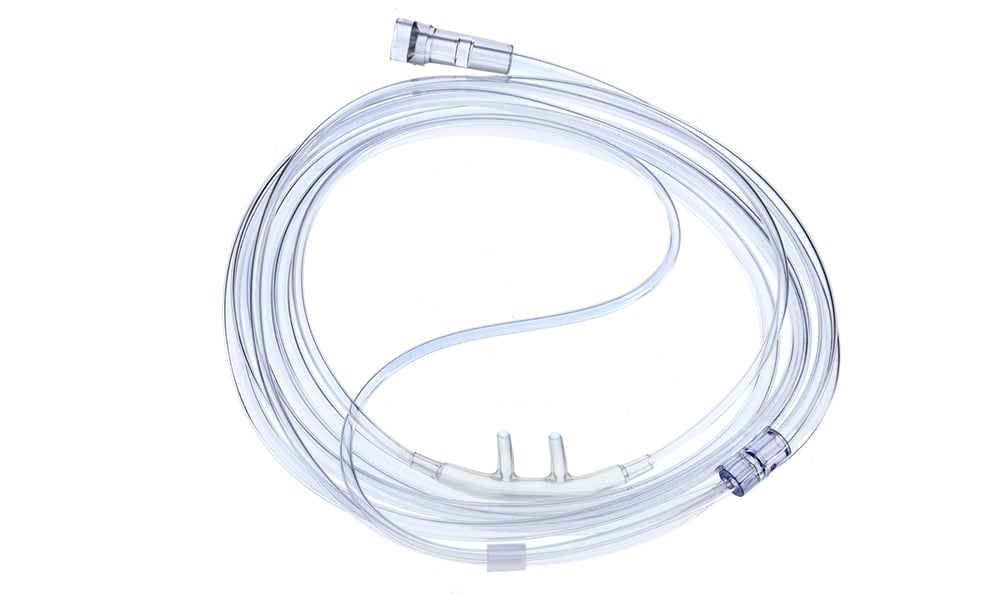If you have low blood saturation levels and have been prescribed supplemental oxygen, that oxygen is most likely being delivered to your lungs via a nasal cannula.
The recommended flow rates for a nasal cannula are up to 6 liters per minute for a standard sized adult. Cannulas do come in a variety of sizes and shapes from infant up to high flow cannulas, which can accommodate up to 10 liters per minute.
The largest population of oxygen patients using nasal cannulas are on a standard adult nasal cannula at a rate of 2 liters per minute.
So how do you maintain and care for your extension tubing and nasal cannula?
There are a variety of opinions out there, from wiping down the nasal prongs with alcohol daily, to replacing cannula every 3 months, to rinsing oxygen tubing with soapy water. I’d like to dispel some of the misinformation out there and provide some best practices for optimal maintenance of your tubing and cannula.
First let’s start with your oxygen extension tubing. This is the tubing that connects from the oxygen source (concentrator, cylinder, or liquid reservoir) to the nasal cannula and is anywhere in length between 4 feet for portable systems and 50 feet for home use. Since this tubing is basically a “closed system,” which means it is not exposed to a great deal of the surrounding environment, you should replace this tubing every 90 days. In extreme circumstances where the patient is exposed to a highly dusty environment, then changing this tubing more frequently would be recommended.
As for the nasal cannula, if you are wearing your oxygen 7 days a week, 24 hours per day, the cannula should be changed every 2 weeks. You can wipe the nasal prongs during those two weeks with a clean cloth that has a mild soap solution, but that is all you need to do. To get something “clean” using alcohol, you would need to continually rub the item for about 20 minutes. Plus, the alcohol will begin to harden those nasal prongs over time.
Portable oxygen has its own maintenance timeframes. If you are leaving the home and using your oxygen system daily and for long periods of time, you should be changing your tubing and cannula more frequently than if you were occasionally leaving the home for brief periods of time. An easy rule of thumb: your cannula should never be stiff or discolored. Contact your supplier for new extension tubing and cannulas if that’s the case.
Keeping your cannula and tubing well maintained will not only help you feel better, but will help assure that you are receiving the correct amount of prescribed oxygen.




.png?width=767&name=COPD%20in%20the%20cold%20(2).png)









